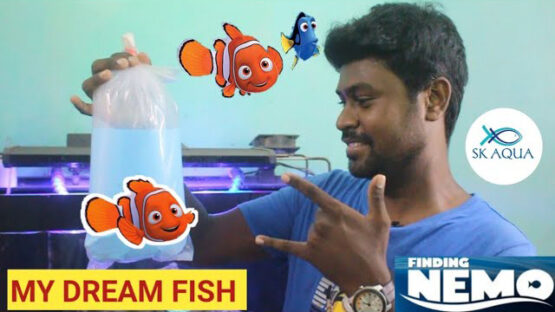- You have no items in your shopping cart
- Continue Shopping
The vibrant and charismatic regal blue tang (Paracanthurus hepatus) – also known as the blue hippo tang, palette surgeonfish, or affectionately as “Dory” thanks to Pixar – is a popular choice for many saltwater aquarium enthusiasts. However, beneath its striking blue body, black markings, and yellow tail lies a fish with specific needs. According to ireef.co.uk, these fish require ample space due to their activity level and social behaviour. While not the most difficult marine fish to keep, their sensitive nature means they are best suited for experienced hobbyists. Here’s a comprehensive guide to provide the best care for your blue tang.
1. Tank requirements: size and setup
Regal blue tangs are active swimmers and require significant swimming space. They can reach a maximum size of 12 inches, so a larger tank is crucial for their long-term health.
- Minimum tank size: A 180-gallon tank is recommended for a full-grown regal blue tang, although a tank as small as 120 gallons might work in a pinch. However, a longer tank is preferable to a taller one for maximum swimming area.
- Aquascape: Provide plenty of live rock for hiding spots and grazing opportunities, as these fish naturally graze on algae in the wild. Ensure open swimming areas are also available.
- Flow: Regal blue tangs thrive in environments with strong water flow, similar to their natural reef habitat. Multiple powerheads or wavemakers are recommended to create adequate circulation and high oxygenation.
- Filtration: A robust filtration system, including a sump setup and quality protein skimmer or algae turf scrubber, is essential to maintain excellent water quality.
- Substrate: Sand or fine gravel substrate is recommended, mimicking the ocean floor and supporting beneficial microorganisms.
- Secure Rocks: Ensure rock structures are stable to prevent collapse and injury to the fish.
2. Water parameters: stability is key
Maintaining stable water parameters is crucial for regal blue tangs. Key parameters include:
- Temperature: 72-82°F (24-28°C).
- pH: 8.1 – 8.4.
- Specific Gravity: 1.020 – 1.025.
- Carbonate Hardness (dKH): 8° – 12°.
- Ammonia and Nitrite: 0 ppm.
- Nitrate: Below 20 ppm.
3. Diet and feeding: herbivores with a twist
Regal blue tangs are primarily herbivores, requiring a diet rich in marine algae and plant matter. Marine algae, such as nori offered on a veggie clip, is a vital food source, as is natural algae growth on live rock. Their diet should also include high-quality, vegetable-based flakes or pellets and frozen foods like spirulina brine shrimp and mysis shrimp. Feed them 2-3 times daily, offering only what they can eat in a few minutes, and vary their diet to ensure proper nutrition.
4. Temperament and tank mates: navigating the reef community
Regal blue tangs can be semi-aggressive, especially towards other tangs. To minimize aggression when keeping multiple tangs, introduce them simultaneously into a large tank and consider different species. These fish are generally considered reef safe and are unlikely to harm corals or invertebrates, especially if well-fed. Peaceful tank mates that don’t compete for food, such as clownfish, are suitable companions.
5. Health and disease: prevention and treatment
Regal blue tangs are prone to marine ich, fin rot, and lateral line disease. Preventative measures include quarantining new fish for 2-4 weeks, maintaining excellent water quality, and providing a varied diet for a strong immune system. If disease occurs, isolate the fish, use appropriate treatments like copper for ich, and ensure optimal water conditions for recovery. HLLE can be prevented with good water quality and a proper diet.
6. General tips for success
- Acclimation: Slowly acclimate new tangs to reduce stress.
- Observation: Regularly observe their behavior and feeding for signs of stress or illness.
- Handling Precautions: Be cautious when handling due to sharp tail spines.
Conclusion
Successfully caring for a regal blue tang involves providing a spacious, well-maintained environment, a balanced diet, and compatible tank mates. Patience and consistency are key to their well-being.

